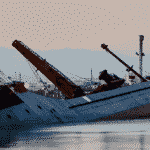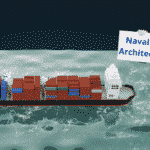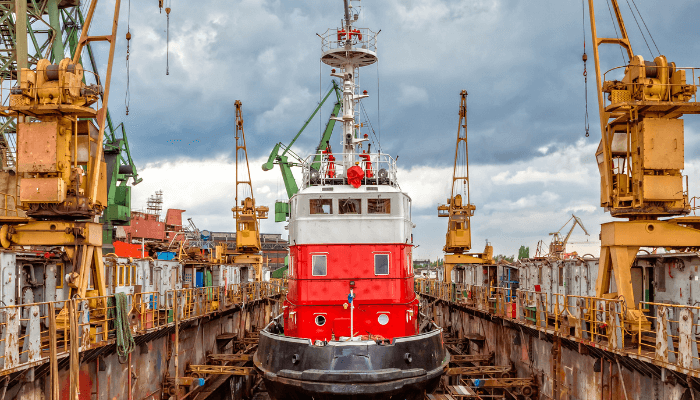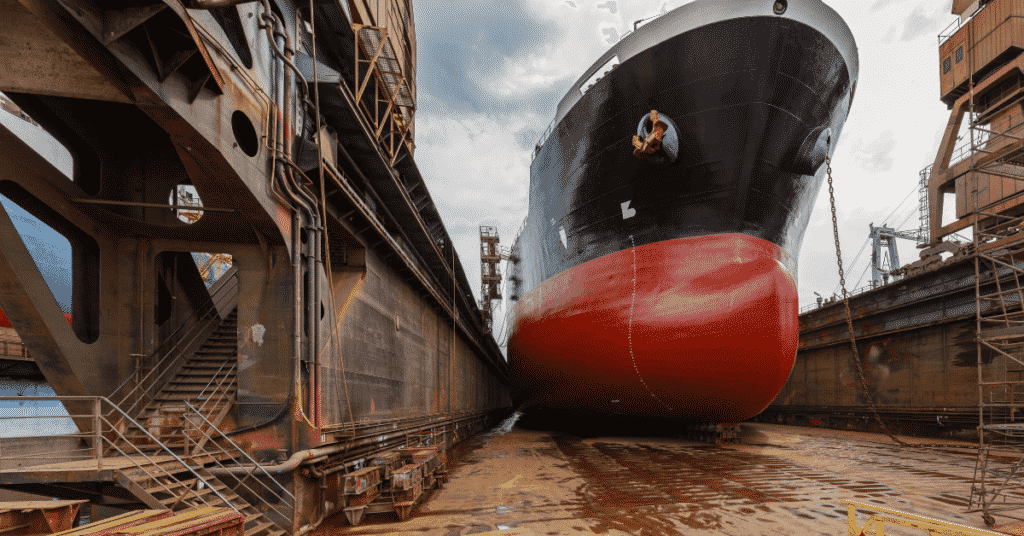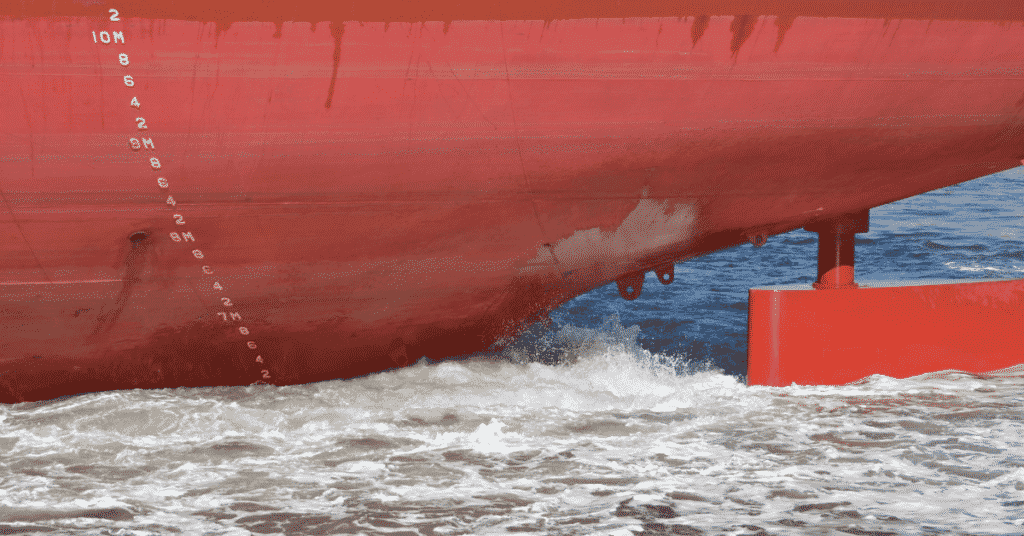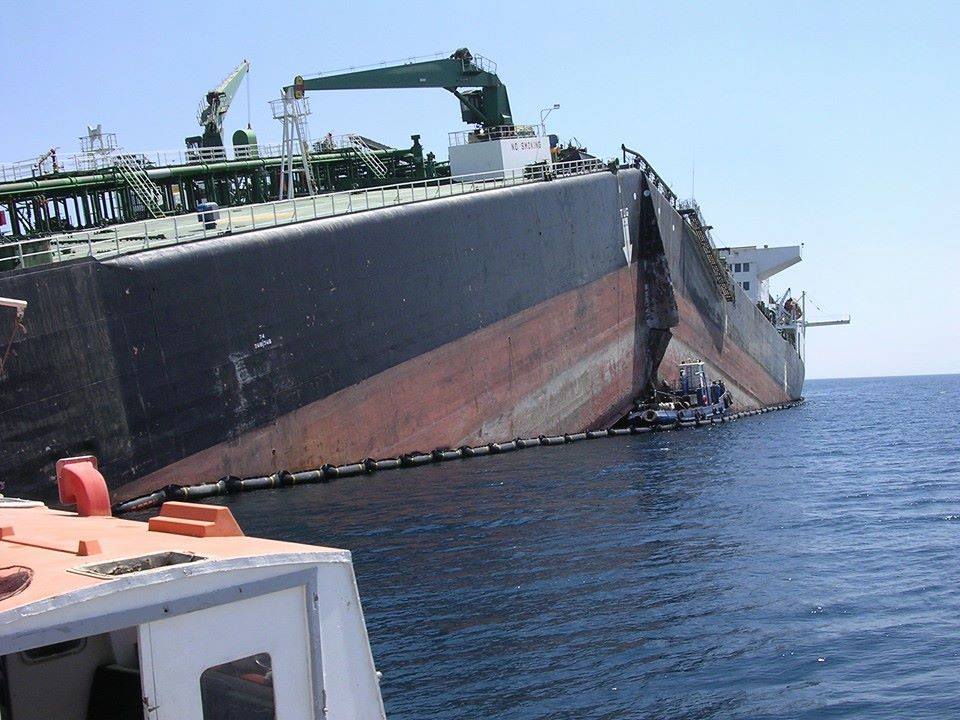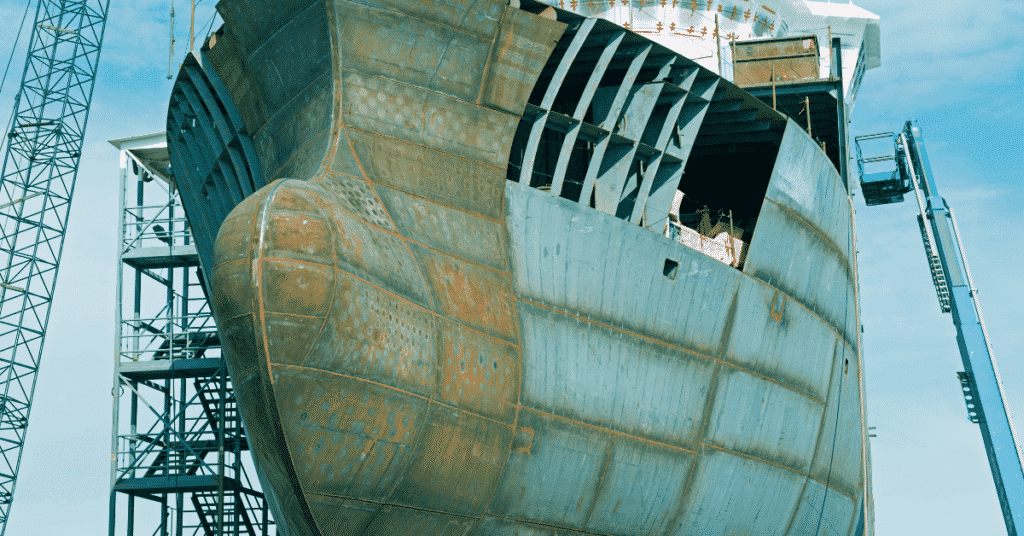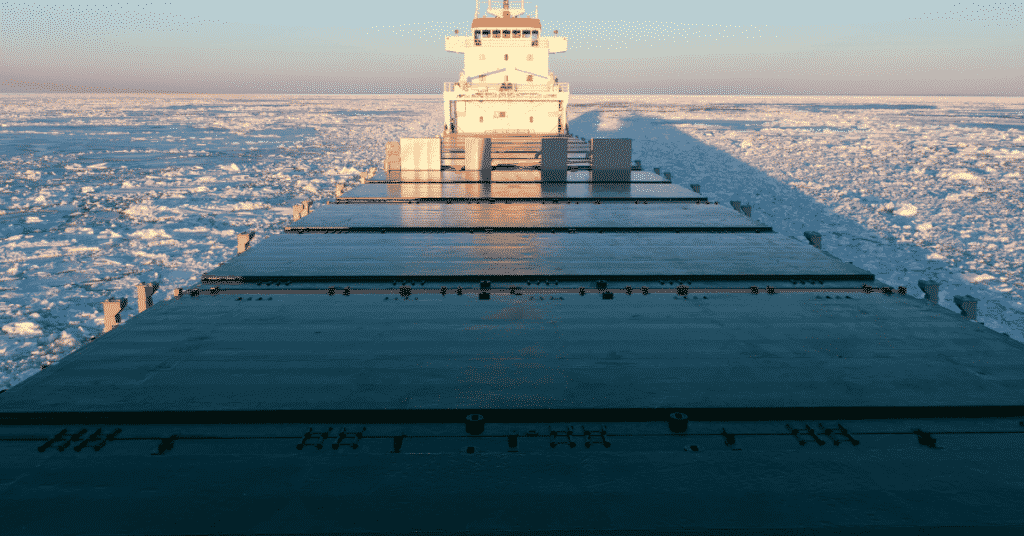What is Rise Of Floor in Ships?
To begin with, let us first concentrate on the transverse section of a vessel given below.
For all practical purposes, the section under consideration is characteristic of some distinctive geometric features, unlike the rectangular box shown beside.
The sides are not entirely straight, the top deck is not entirely flat, and the bottom shell plates are not flush to the ground.

Depending on the vessel type, size, and design, the extent of all these features or parameters varies accordingly. Moreover, they also vary from location to location in a given vessel, with transverse sections in the forward and aft regions having a greater extent of these features and the middle region or sections in and about the midship, the least, for all practical purposes.
A barge-like or box-shaped vessel, having none or minimal extent of these features throughout its length, can be considered the closest to an ideal rectangular box. All these distinctive features are given unique names in the language of naval architecture.
Now, shift your attention more specifically to the bottom sides. As you can see, the bottom shell plates are not level with the ground or baseline and rise at an angle towards the sides, eventually merging with the side shell.
This brings us to another unique nomenclature in the field of ship design, known as the rise of floor in ship, or simply rise of floor, which is the clearance above the ground the bottom shell plate has.
In a more technical sense, the rise of floor can be defined as the vertical distance above the baseline or the keel line (0 level) to the point that a tangent drawn to the side shell plating on either side intersects the side shell at the maximum beam, usually taken for the section amidships.
Now, read the above definition carefully while referring to the figure below. For convenience, we have taken the same transverse section as above.
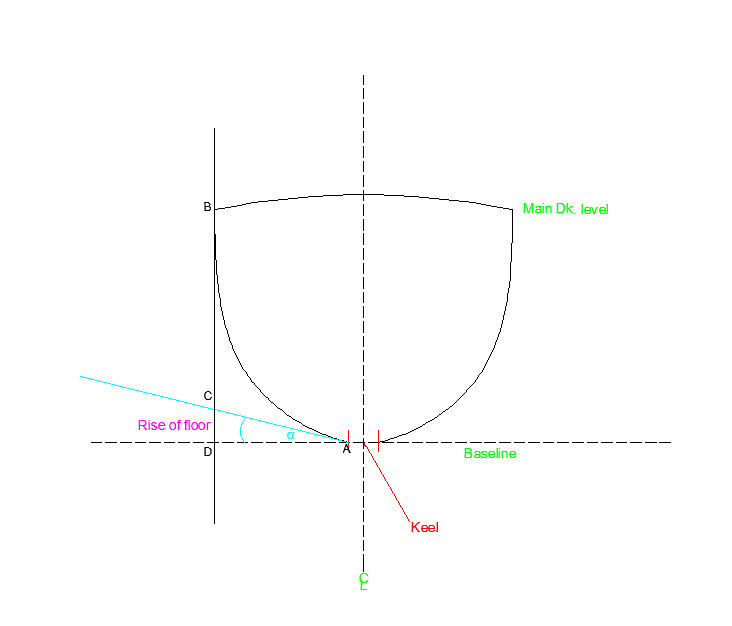
We can see that the bottom shell rests on the baseline for some extent about the centreline and then gradually elevates upwards towards either side.
The part of this bottom shell touching the ground level or concurrent with the baseline reference without any elevation (as marked separately) is also known as the keel plate. This keel plate is symmetric on both sides about the centreline.
For all practical purposes, from a structural point of view, this keel plate has the highest scantling as it is expected to bear the maximum degree of global loads and moments in the entire vessel. Now, take any given side (port side in this case, considering the plane of this section being viewed from aft to forward of the vessel) and notice the point where the keel plate ends, or in other words, the bottom shell starts rising from the baseline level.
Mark that very point as A and draw an arbitrary line from there such that the given line is tangent to the plate. The angle between this tangent line and the baseline is α, as shown.
Then, look for the maximum breadth or beam for this section. Here, it happens to be at the top deck level, which is also the case for the majority of modern ships.
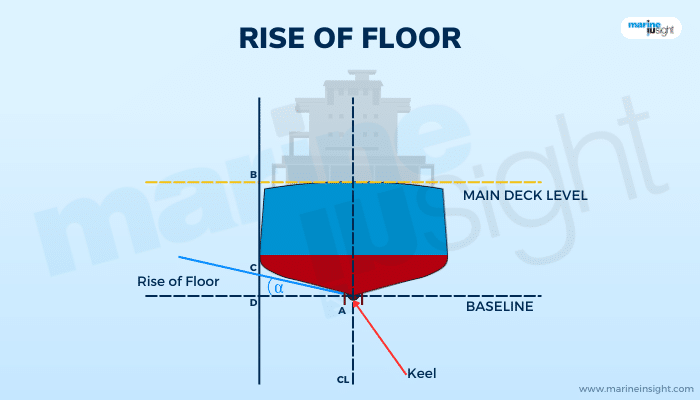
The maximum beam is at the deck, and the breath gradually decreases as we go downwards. This instance of design is known as the flare. If the maximum breadth for a given section is not at the main deck level and somewhere below, this instance of design is known as the tumblehome.
Mark the deck edge on the port side extremity as B. Then, draw a vertical projection from B. The vertical projection line intersects the tangent line at a point, say C, and the baseline datum at another point, say D. The line segment CD is nothing but the rise of floor.
For all practical purposes, the rise of the floor for a given vessel is measured and defined at the midship.
However, it can be calculated for any random transverse section along the length of the vessel, and this would give rise to the floor pertaining to that section.
As with almost the majority of ship designs, the maximum beam is occurrent at the midship section, and the breath of the vessel decreases towards the forward and aft regions. Moreover, the hull happens to be gradually finer towards the forward and aft ends and fullest at the midships. Hence, accordingly, the rise of the floor is minimum at the midship or the parallel middle body and increases towards the ends.
The type of vessel is also a determinant of the rise of the floor. For large fuller form vessels, like tankers and bulkers, where the sections at or close to the midship are very much closer to a rectangular box, with minimal curvatures, the bottom shell plating is mostly concurrent with the baseline or has a small amount of elevation. Thus, the rise of floor is very less or even zero.
This marginally increases if go towards the front or the aft, as expected.
On the other hand, for finer-form vessels like fast passenger ferries or military combat vessels, the bottom shell plates show considerable elevation. Thus, the rise of floor is much more.
We have mostly known about the term midship section coefficient, which determines the fullness or fineness of a vessel. At this point, it can be well said that the midship section coefficient is a direct indicator of the rise of floor and vice versa. Hence, for fine-form ships, which have a lower midship section coefficient than fuller-form vessels, the rise of floor is higher, and vice-versa.
The rise of floor is mainly in accordance with the vessel type and service. Finer form vessels that need to cater for a higher speed and propulsive efficiency have greater rise of floor, whereas fuller form ones have a lower value of the same. Hence, we can say that a higher rise of floor contributes to a finer form and vice-versa.
Consequently, extending the same point of discussion, we can conclude that a higher rise of floor essentially improves the speed requirements of the vessel and, at the same time, also reduces frictional resistance effects.
However, a significant rise of floor also somewhat affects the transverse centre of gravity at that location by moving it upwards, and this marginally influences the stability of the vessel. This brings us again to the problem of stability and seakeeping in finer-form vessels, especially for higher depths and drafts.
The rise of floor is very less, as mentioned above, in larger cargo vessels. This is mainly because it hampers the maximum tonnage cargo space requirements, something much more crucial for commercial vessels than speed.
However, a small amount of rise is often present to facilitate better drainage. The rise of floor in ships is also known as the deadrise.
You might also like to read-
- What Are Vessel’s Particulars?
- What Are Deck Seals?
- What are Margin Plates in Ships?
- What is Reserve Buoyancy in Ships?
- What Is Fatigue In Ships?
Do you have info to share with us ? Suggest a correction

About Author
Subhodeep is a Naval Architecture and Ocean Engineering graduate. Interested in the intricacies of marine structures and goal-based design aspects, he is dedicated to sharing and propagation of common technical knowledge within this sector, which, at this very moment, requires a turnabout to flourish back to its old glory.
Latest Naval Arch Articles You Would Like:
Subscribe To Our Newsletters
By subscribing, you agree to our Privacy Policy and may receive occasional deal communications; you can unsubscribe anytime.







